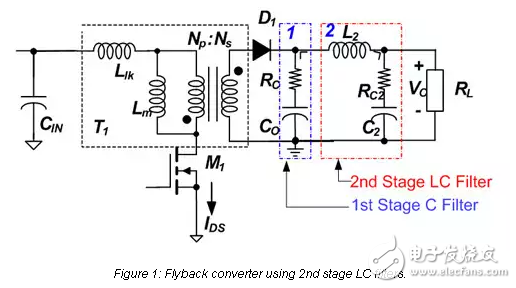
资料下载

采用第二级LC滤波器的反激变换器PWM开关建模
采用第二级LC滤波器的反激变换器PWM开关建模
在电源上管理输出电压纹波是满足法规排放要求的方法之一。一个第二阶段LC滤波器的有效实施,需要额外的分析和调整,使电源稳定。实现第二级LC滤波器的反激式转换器的设计可以使用较少的滤波电容,并得到较少的电压纹波的输出负载。一个第二级LC滤波器与额外的输出电容器,以减少电压纹波是一个较低的成本解决方案,提高了系统的可靠性,因为使用较少的电容器。然而,第二级LC滤波器的补救措施引入了在输出调节的不稳定,而不重新调整补偿网络。为了解决这个输出调节问题,一个强大的设计应该得到一个小信号模型的开关功率转换器。推导将在闭环控制系统中识别开关电源的极点和零点,这样就可以获得总系统行为的直觉,从而优化补偿网络。

There are three popular ways to derive a small signal model for Flyback:
State Space Averaging method introduced by Middlebrook;
PWM switch modeling from Vorperian;
Averaged Switch method from Robert Ericsson.
The State Space Averaging method has been used for modeling many PWM converters and has been proven to be a useful tool in designing a stable loop. However, since the State Space Averaging method utilizes the parameters like the current signal inside the inductor and the voltage across the capacitor, the derivation work must be redone if any other active components are added. This feature makes the State Space Averaging method not convenient to model the Flyback converter with 2nd stage LC filter.
声明:本文内容及配图由入驻作者撰写或者入驻合作网站授权转载。文章观点仅代表作者本人,不代表电子发烧友网立场。文章及其配图仅供工程师学习之用,如有内容侵权或者其他违规问题,请联系本站处理。 举报投诉
- 相关下载
- 相关文章






